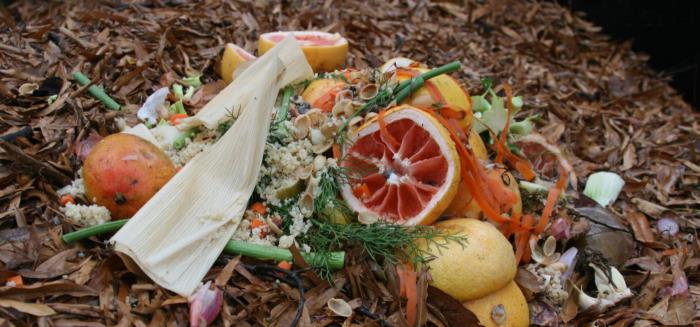I love a good metaphor, and today’s post by James Dontje really delivers. Metaphors, when they work well, alert us to new discoveries, sometimes even concerning topics we thought we had all figured out. So, in today’s post, enjoy James’ piece engaging stewardship and a theology of…rot!
Yours truly,
Adam Copeland, Center for Stewardship Leaders
Compost Bin Stewardship
James Dontje
Say “stewardship” and “sustainability” (or “environment”) in the same sentence, and your listener will probably think of things like buying less stuff, recycling our waste, and, conserving energy–all ways to fulfill our calling as stewards, or caretakers, of God’s creation by “living lightly on this earth.”
The more I learn about this topic and our beautiful earth, however, the more I think that we are called to develop a theology of decay. Or more bluntly, a theology of rot. Whoa, here, this is getting messy, even stinky already, isn’t it?
For many of us, including myself, the Biblical understanding we draw from our religious education paints decay and rot as the result of a Creation gone astray, something that would not happen except for sin in the world. Through sin, death entered into the world, and with it decay, the degradation and degeneration of all that is good.
Every time I become complacent in that thinking, however, something comes along to remind me that decay and rot are an integral part of our world. Most recently, I learned more about how biological life in the soil is critical to it being, well, soil. Without the hosts of microbes living in the soil, it would be just dirt, a powdery mix of sand, silt and clay that wouldn’t be much good for anything. But add all those microscopic creatures and you have something that is vital to our life on this planet. One of the most important things that those creatures do is break down plant and animal matter in the soil, making better soil that helps plants grow. Without the decay caused by those organisms, we wouldn’t have the soil that feeds us.
If rotting (or decomposition or decay or whatever you want to call it) is a fact of life on earth, what does that mean for our theology? I’m not sure–that’s why I think we need to develop a theology of rot. But before we get that figured out, I think this idea has a lot to say about stewardship. Yes, certainly about environmental stewardship because we need that healthy biological activity in our soil and other places to sustain life for us and many other creatures. But also about other kinds of stewardship, too.
Think about it. What does the buildings and grounds committee in a church do? Help keep the building working well for ministry. Repairing the building when it becomes worn and broken, maybe even planning a major renovation when the building no longer fits the congregations purpose. Sometimes even tearing an old building down when it is time to start fresh. Isn’t this really about managing processes of decay and renewal like those that happen in the soil?
Likewise, think about our fellow members. We all have a finite lifespan that leads us from infancy to, we hope, a ripe old age. Yes, congregations struggle with managing the change that comes when members age, but in many congregations, elderly members lead the way by “recycling” the wealth they have been given to support and reinvigorate congregational ministry. An equally powerful witness occurs when an aging congregation makes a thoughtful commitment to die, to let what was pass away, so that a new kind of ministry can grow from the gift of letting go. In these examples, decay and decline are not seen as the end, but rather the pathway to renewal, a way to embrace God’s continued creative work in our lives.
Through their stewardship of what God has given them, God’s children are actively participating in decay, yes, the decomposition and rotting away of the old that leads to rebirth and regeneration. In this view, we can think of the offering plate as the compost bin that generates new life from our contributions.
For More Information
James Dontje is a member of First Lutheran Church in St. Peter, MN. He is the Director of the Johnson Center for Environmental Innovation at Gustavus Adolphus College where one of his duties is supporting the campus composting operation.

